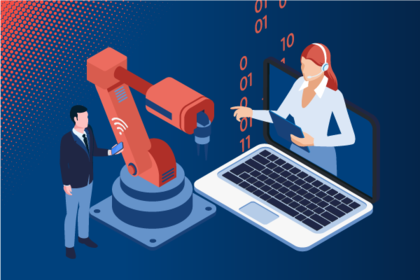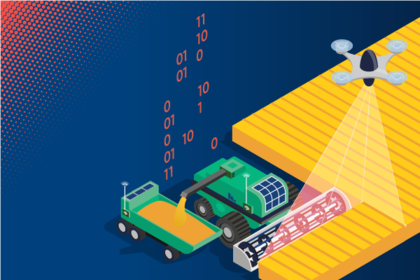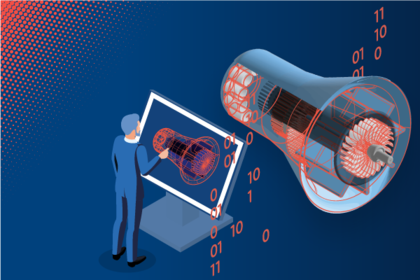Collaboration – Part 3: Strategies for Networked Aftersales Knowledge
Today, companies in the mechanical and plant engineering sector are not only fighting a "war for talent" — they are also threatened by the "great resignation." According to PwC, one in five employees intends to quit their job in the coming months. The IfW also expects that from 2026 onwards, around 130,000 more people will retire each year than will be added to the workforce. And many companies will have to not only respond to the consequences of demographic change but also deal with digitalization.

However, digitalization is not only a challenge but also an opportunity. It could stop the "memory loss" among mechanical and plant engineers, which worsens with every employee who leaves the company. Digital tools make it possible to keep knowledge within the company. Shared know-how helps to buffer the consequences of demographic change.
The goal is a collaborative work organization that promotes learning and simplifies communication, coordination, and knowledge transfer. The following strategies can help companies achieve this goal in aftersales.
Tracking down knowledge and data
What information do service technicians need, and where in the company can this information be found? How have aftersales employees obtained the data they need for their work so far?
Before machine and plant builders implement new knowledge and collaboration tools in the aftersales area, they need to find answers to these questions. Only then will they know which processes they can tie into and which workflows need to be rebuilt.
In addition to data, it is equally important to identify and prepare the know-how available in the company so that all employees can benefit from it. Machine and plant manufacturers have various options at their disposal for this purpose:
- What are the most common questions that arise in the daily work of service technicians? A list of FAQs provides quick answers and makes it easier for new employees to get up to speed.
- Which experts in the company are able to solve frequently occurring problems? Their valuable knowledge can be pooled in advice articles on the intranet. Their colleagues can then access their experience at any time. This takes the pressure off the experts: They don't have to keep answering questions from colleagues and thus have more time to focus on their customers' problems.
- Which processes are repetitive in everyday service work? Instead of showing new employees click by click how to order spare parts, for example, recurring processes can be recorded in webinars or screen videos. This also saves time, and new employees can look at the recordings as needed.
Bringing together knowledge givers and knowledge takers
Experience with processes and technical know-how can be summarized as explicit knowledge. This very concrete factual knowledge can often be easily documented and passed on. Implicit knowledge, on the other hand, presents a greater challenge.
Implicit knowledge includes, for example:
- personal relationships with customers, suppliers, and partners that have been built up over many years
- individual experience from previous projects
- intuition regarding the right way to deal with certain customers
- creative strategies for solving specific problems
This "hidden" knowledge is linked to individual employees and their experiences and is difficult to package in lists of FAQs or webinars. To preserve it within the company, personal communication and collaboration between young and old employees are indispensable.
Mixed-age teams, for example, promote the transfer of knowledge from older to younger employees and sustainably secure knowledge within the company. According to the KVD Service Study 2021, which was conducted by the German Customer Service Association (Kundendienst-Verband Deutschland), 90 percent of the most successful companies in the mechanical and plant engineering sector rate concepts such as lifelong and on-the-job learning, coaching, and action learning (learning by doing) as particularly important.
Focusing on the right systems
If explicit and implicit knowledge are preserved within the company, there is a risk of information overload. To ensure that aftersales employees can really make use of all this knowledge, companies must rely on digital tools as early as possible in the preparation process and structure this information.
With the right systems in place, it becomes much easier to build a clear "knowledge ecosystem" and to engage in knowledge-based collaboration. The right tool for each job must be collaborative, fit into aftersales processes, communicate with other systems in the company, and encourage service technicians and their colleagues to actively use and grow the system.
Much of the information relevant to aftersales already exists within the company —in technical drawings and documentation, in operating manuals, or in the ERP system. However, this data is usually disorganized, not up-to-date, and distributed across more than one software.
The challenge is to bundle this information centrally and connect it to systems in other departments. One solution for transferring existing knowledge into the digital world is the interactive spare parts catalog. In a further modernization step, this catalog can be integrated into a service information system that offers further opportunities for knowledge transfer within the team and beyond.
Such a system for knowledge and information management has various advantages for aftersales service:
- Knowledge is bundled centrally and shared efficiently. This helps service technicians to optimize their workflows and increase the first time fix rate, which is important in the area of service.
- Unlike bulky folders, the system makes all of its information available digitally, in real time, with a search function and optimization for mobile devices. Service technicians can thus find the data they are looking for independently and at any time. Conversely, they can save their input directly in the system and make it accessible to their colleagues.
- With a digital spare parts catalog, aftersales employees gain access to application-specific knowledge that is tailored to their tasks, thus saving a lot of time they would otherwise spend searching for information.
Implement the basic strategies of change management
Modern collaboration and knowledge transfer will be successful only if all of the employees are actively involved and accept new tools and processes. That's why the most important basic strategies of change management should be implemented when you’re introducing new collaboration and knowledge tools:
- Communication: Why does aftersales need a knowledge tool? What is the goal?
- Appreciation: All employee insights are valuable and advance the entire company.
- Motivation: Why is it worthwhile to share knowledge and use new tools in the employees’ daily work?
- Support: Managers as well as supervisors and the HR department must actively support and serve as models of knowledge management.
Fit for the future with know-how and modern collaboration
If companies in the mechanical and plant engineering sector manage to involve all aftersales employees in the change process and take existing processes and tools into account, their employees’ acceptance of knowledge transfer and collaboration will increase.
In three parts, we have taught you how collaboration bundles knowledge management in aftersales and makes it available to the entire workforce. Using these strategies will help you lay the foundation for a resilient and future-proof company.
Do you need support as you digitalize collaboration and knowledge management in your aftersales services? Our experts are at your side: Contact us




